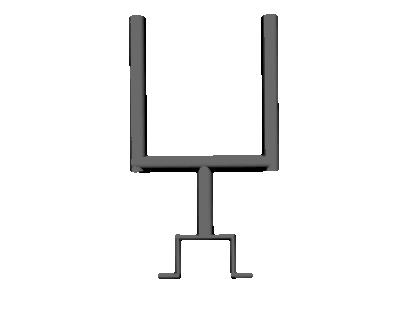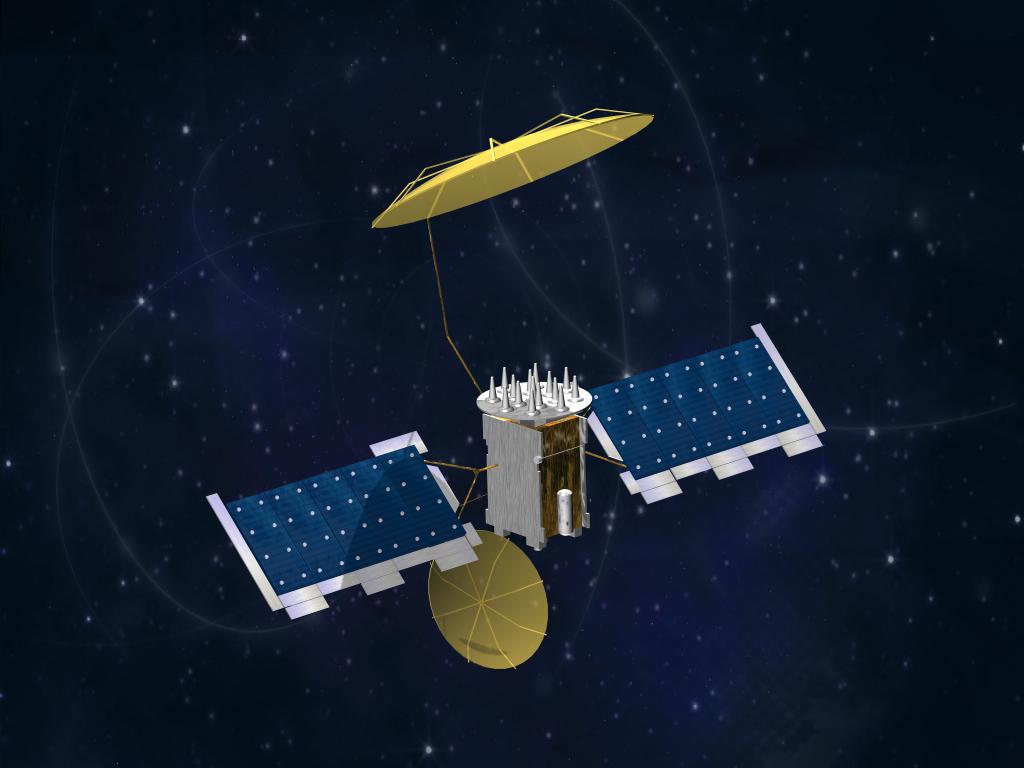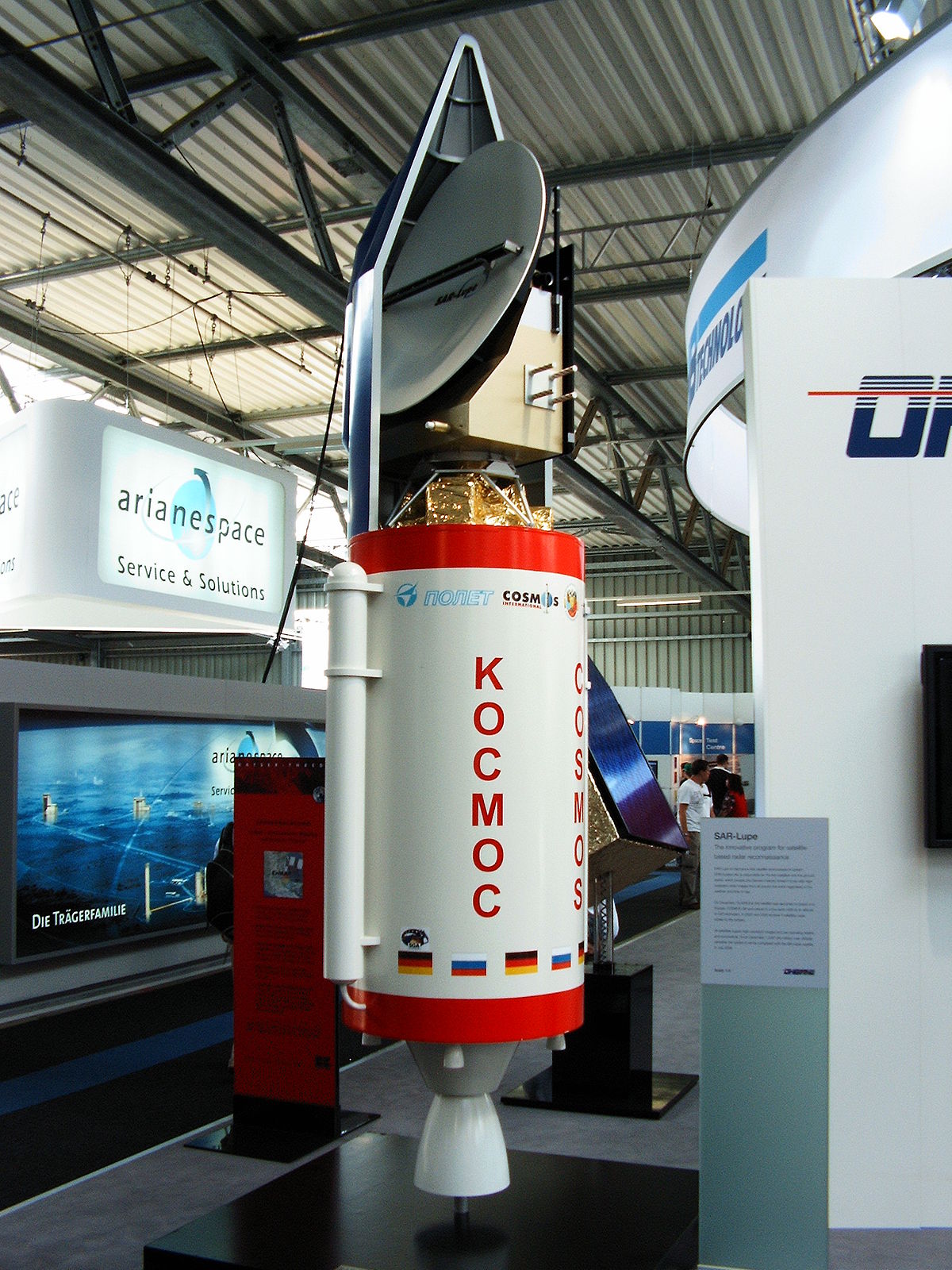Radar Reboot
-
Better solution is to make the drone cheap enough that you can use one as a decoy while a second gets a missile lock.
Only if the drones are specifically there to dogfight with enemy aircraft. A lot of the time they’ll have some other mission to perform and encounter the enemy, in which case you probably wouldn’t want to sacrifice one drone so the other can kill an enemy aircraft, and you’d also have the expense of sending twice the number of drones out even on missions where the decoy isn’t used at all (which would probably be most of them). The expense isn’t just in the drones but also the whole infrastructure to support and control them, though if it’s a specific decoy drone then it could probably be simply slaved to the other drone and be controlled by a single pilot on the ground.also one of the reasons the F-4 was designed without a gun was because the vibration from a firing cannon would have wrecked the shit out of its delicate 1960 electronics components. Huh.
Not uncommon with 1960s tech. The M551 Sheridanlight tankArmored Reconnaissance/Airborne Assault Vehicle had a sophisticated 152 mm gun that doubled as a missile launcher. Firing a conventional round from the gun did two things: first of all the tank jumped back by up to a meter, and second it gave the electronics a bad enough kick that firing a missile would be impossible for a while, if not until repairs had been made.
-
I'm pretty sure NASA writes all its critical software 2 or 3 times for this very reason.
-
IDK if it's because today information flows faster, but the F35 is the joke of aircrafts. Maybe they had the same problems with previous fighters or even if other countries did, but damn the F35 is getting it all. Or maybe they don't give a shit because the next war will use drones and this is a money influx to keep the industry happy.
-
What bugs me is that it cut the F-22 off. The F-22 is a sweet-ass plane, and it deserves more respect than was given.
BTW, it's worth noting that most top generals want to shrink the US military. It's Congress, which controls their budget, that won't let them.
-
I remember people saying much the same about the F-20 - though in that case it was more that it filled a niche that the USAF insisted they already had covered, but didn't (much like the F-5, it's parent design, before it). The perverse thing was that the F-20 was derided because it cost too little at a time when military budgets were ballooning - if I understand correctly, the fact that it did a job that the F-16 was poorly suited for for a fraction of the cost was seen as an embarrassment by the brass.
Also, the drive for all-in-one designs, which had already been disastrous with the F-111 in the 1960s (and ironically later survived mainly as the F-111G, a very highly specialized ground attack aircraft), was being pushed by the Reagan administration and the JCOS, which meant specialized aircraft (the F-5 and F-20 were mainly fast-pursuit dogfighters) had little support.
-
I remember a story about that recently actually. Something to do with enterprise hard drive sync software that cascaded the changes that caused it to hard crash, that replicated throughout the entire system and crashed everything.
Is this the story about the HP Tandem NonStop that had an SAS controller bug and became NonStart? I remember reading about that on this site, though the OP took great pains to not use 'HP", "Tandem", or "NonStop".@Eldelshell said:but damn the F35 is getting it all.
The A-10 is a ground-attack aircraft that can almost hover in the air with relatively speaking no forward momentum, as it hucks gigantic 1lb "bullets" at houses or vehicles (usually not people since it'd meatpaste them), with a large tolerance for damage, then it can quickly pivot and (slowly, but fast enough) leave the operational area. That sounds perfect for cutting off last year and replacing with a buggy, overweight stalls-if-you-look-at-it-funny fighter jet that won't be available for another half-decade!
-
 I know that the F-35 is supposed to be (yet another attempt at) an all-in-one fighter-bomber, but the idea that it could replace the Warthog is beyond crazy. I can see upgrading or replacing the A-10 with a more modern tank-buster, but there is no way in hell the F-35 is suited for that role, VTOL or not.
I know that the F-35 is supposed to be (yet another attempt at) an all-in-one fighter-bomber, but the idea that it could replace the Warthog is beyond crazy. I can see upgrading or replacing the A-10 with a more modern tank-buster, but there is no way in hell the F-35 is suited for that role, VTOL or not.A problem which a lot of military planners don't get is that "Jack of All Trades" is itself a specialized role, one which you only need in an emergency when intelligence is lacking and logistical support is problematic. Having a wing of F-35s as part of a RDF makes tons of sense, if you can afford them. Using them as the cadre of your whole air force? Not so much.
Larry Niven explained it well in "The Soft Weapon": a complex, multifunction, multi-configuration device is more likely to be a hindrance on the battlefield than a help. The roles you need that sort of thing are more to do with intelligence than combat. In the case of the F-35, that means you only really want it when you have no clear idea of who or what you'll be facing off against, which is only going to be the case when something comes at you out of left field. In a more conventional fight, you need speed and effectiveness more than you need flexibility. The F-35 has its role, but it is not at all the one it was designed for.
-
That sounds perfect for cutting off last year and replacing with a buggy, overweight stalls-if-you-look-at-it-funny fighter jet that won't be available for another half-decade!
Didn't they just decide (again) to keep it alive a little longer?
-
The Air Force hates the A-10 because it exists only to support other services. Everybody other branch loves it. The stupid aircraft rules prevent it from being transferred to the Army.
The A-10's biggest problem is that it wasn't built with helicopter blades. It does the exact same ground support role as our attack helicopters, but it's managed by a service that hates being in that role.
-
Didn't they just decide (again) to keep it alive a little longer?
I think they committed to another few years. Usually because Congress begs them to. (Because soldiers beg their Congressmen to beg them to.)
I think they need to figure out a way to transfer that role to another branch, then they could get serious about upgrading the existing planes and designing new ones. The Air Force will NEVER like or respect the A-10.
-
could a computer-controlled opponent beat a fighter pilot in a simulator, say, half the time?
Land your aircraft. You have twenty seconds to comply.
-
Here’s a thought: could a computer-controlled opponent beat a fighter pilot in a simulator, say, half the time?
My guess would be that, at least for dogfighting, it could probably do so far more than half the time. With no fleshy bits on board, the only limits to the manoeuvres possible are down to engineering - what can the airframe stand and still remain in flight. Same goes for evasive action - shifts of trajectory that would jellify a human pilot become par for the course. And you need to make enough damage for the thing to fall out of the sky, rather than being satisfied with merely making holes in the blood bag.
-
With no fleshy bits on board, the only limits to the manoeuvres possible are down to engineering
I was thinking more of whether the software is good enough to reliably beat human pilots. It probably is, in which case the question is: and can it run on a computer that fits inside a drone without having to get rid of other equipment?
-
It probably is, in which case the question is: and can it run on a computer that fits inside a drone without having to get rid of other equipment?
If you can fit a pilot in an aircraft, you can fit a computer. Most drone designs used today aren't suitable, but they're also not suitable as an air superiority fighter anyway as they're usually designed for endurance and low airspeed. Think instead of fitting the advanced avionics in a fighter.
-
It probably is, in which case the question is: and can it run on a computer that fits inside a drone without having to get rid of other equipment?
Given the amount of computers in the Eurofighter Typhoon, I'd say it's actually quite easy. If you have a drone the size of a Eurofighter, that is. Which you'll need if you want to strap bombs and stuff to it.
-
That's a major fight in the military right now. The Air Force top brass is almost entirely pilots, so you can imagine how that plays.
The issue might be forced on them. The most limiting factor for the maneuverability of a jet is the limited g-force that a pilot can withstand. If enemy nations develop drones that have superior maneuverability in combat, they'll have to capitulate.
They'll probably be willing to compromise by having remotely piloted drones, but even then, AI would probably be able to react faster and be a more accurate shot in a dogfight.
The latency's too high for dogfighting though. So there's some jobs drones can't do.
I didn't know that, but I think the days of human intervention being necessary are numbered. It just depends how long it takes the tech to catch up.
-
The most limiting factor for the maneuverability of a jet is the limited g-force that a pilot can withstand. If enemy nations develop drones that have superior maneuverability in combat, they'll have to capitulate.
Perhaps you could put large explosive payloads on the drones and program them to pilot themselves directly into the enemy like suicide bombers.
We could call them air-to-air missiles.
-
The issue might be forced on them. The most limiting factor for the maneuverability of a jet is the limited g-force that a pilot can withstand. If enemy nations develop drones that have superior maneuverability in combat, they'll have to capitulate.
I think one of their arguments will be (actually, are...pretty sure I've heard / read this before) that there's no substitute for having a human on hand to apply judgment (and the accountability that comes with it) to a situation. Maybe VR will improve enough that a drone will be able to provide that, but limits like the speed of light will probably make that pretty difficult in certain cases.
-
-
Yeah, if you're piloting a drone on Mars
Ever watched someone have a conversation via satellite?
-
Ever played a fast-paced online game with someone on the other side of the world?
-
Ever watched someone have a conversation via satellite?
The codecs cause a delay that's a couple of orders of magnitude greater than that caused by the speed of light; on Terran scale, the speed of light is effectively infinite.
-
The table below indicates the communication delay that occurs in a one-way transmission.
...
Geosat Link (US-Aus) ~80,000 km 0.25 sThat's just the up or down time for the signal. Doesn't account for going to another geosynchronous satellite. OK, it's possible to create and maintain a LEO fleet of satellites, too. Not sure how much that would change things, and you're obviously making the network a lot more complicated at that point.
Ever played a fast-paced online game with someone on the other side of the world?
You're going to run a cable to the drone?
-
geosynchronous satellite
Ah, yeah, that would cause more of a delay. Still, for military ops, they'd use an LEO system anyway; IIRC, GPS is an LEO network.
-
Still, for military ops, they'd use an LEO system anyway; IIRC, GPS is an LEO network.
GPS is totally different than communications. AFAIK, even the current planned system is geosynchronous.
-
If you can fit a pilot in an aircraft, you can fit a computer.
Well, yes :) It’s just that I’ve never looked into the kind of AI necessary to beat a fighter pilot, so I have no idea if you could run one on a phone or would need a supercomputer — or anywhere in between. That’s mainly why I was wondering out loud.If you have a drone the size of a Eurofighter, that is. Which you'll need if you want to strap bombs and stuff to it.
If you’re building an air superiority drone, it shouldn’t be carrying bombs. It could probably do its job just fine with a few missiles (two to six or so) and a gun; this fits in or on an aircraft a lot smaller than a Typhoon. If the drone’s cheap enough it wouldn’t need to carry a lot of ordnance because you could put several up and coordinate their attacks, allowing the drone to be smaller still.
-
was thinking more of whether the software is good enough to reliably beat human pilots. It probably is, in which case the question is: and can it run on a computer that fits inside a drone without having to get rid of other equipment?
What I was trying to say, and probably missed getting across entirely, was that the software doesn't have to be all that good if the hardware is that far ahead of what the human pilot is installed in. If a drone can make evasive moves a human pilot couldn't possibly make, and thus make itself enormously more difficult to shoot down than a human-piloted craft, it's already way ahead of the human. If you can't shoot the fucking thing down, and it's shooting at you, you must go on the defensive.In terms of sensory apparatus, and assuming that apparatus isn't being somehow jammed or otherwise interfered with, a drone is way ahead of a mere human. No need to have "line of sight" (or rather, assume a full 360° line of site in all planes), and it's all fed directly to the "brane". In terms of manoeuvrability, a drone is ahead. In terms of extrapolating possible options, a done is probably also ahead - computers are beating human grand masters at go already, and a drone can relatively simply "know" the operational limits of every enemy it's likely to meet, along with probabilistic information as to what actions a human-piloted craft might take.
I envisage a future where humans give "broad strokes" instructions remotely, and the machine does 99.9% of the rest.
-
I envisage a future where humans give "broad strokes" instructions remotely, and the machine does 99.9% of the rest.
We're already there. A human can target an enemy aircraft from 20+ miles away, say "kill that", and an air-to-air missile does the rest.
-
US Army
#THIS ISN'T THE ARMY THIS IS THE AIRFORCE YOU IDIOTIC FUCKCUNT!!!!!!!!!!!!!!!!!!!!!!!!!!!!!!
-
And neither Army nor Air Force would ever consider ever using evidence on anything collected by the Navy. I'm not sure that inter-service collaboration could even extend to the point where everyone would turn up at the same place and same time for a punch up, no matter how much this would be desired by the parties concerned…
-
@tufty said:
I envisage a future where humans give "broad strokes" instructions remotely, and the machine does 99.9% of the rest.
We're already there. A human can target an enemy aircraft from 20+ miles away, say "kill that", and an air-to-air missile does the rest.
By "remotely", I meant "sat somewhere perhaps thousands of miles away". "Within missile range" is not remote, no mater how far you might think 20+ miles is to walk. If a drone can avoid that missile due to its superior manoeuvrability, and at the same time launch an air to air missile or two in the opposite direction, the human 20+ miles away is, as they say, "proper fucked".
-
 We've already established what this is; now you're just haggling over the distance.
We've already established what this is; now you're just haggling over the distance.
-
Goddamned, yesterday I saw an article about one of the tactics to try and get rid of the A-10 back in the 80s, which was to put a minimized GAU-8 on F-15s to make an A-16.
Here it was:
No wonder I couldn't find it, it was an old article. I thought it was recent.
Anyway, the first time the A-16 fired the gun pod, it knocked the gun off-of-center, jammed the weapon pylon it was attached to, and destroyed electronics in the plane. NOT VERY SUCCESSFUL.
-
 We've already established what this is; now you're just haggling over the distance.
We've already established what this is; now you're just haggling over the distance.
Although I appreciate the retread on a tired old joke, as the actress said to the bishop, "fuck off you twat". We were talking about drones vs human piloted aircraft. A human piloted aircraft, even firing off long / beyond visual range missiles, is still a piloted aircraft, and not a drone. Somebody sat in an aircraft is risking his own skin on the offchance that he has better missile and / or radar range than his opponent. Not at all the same thing as somebody sat in a bunker remotely connected to the conflict.
-
We're talking about unmanned aerial vehicles with the capability for self-guidance. The point is that the human operator who pushes the kill button wants to sit well out of the danger zone.
When BVR missiles first came onto the scene, 20 miles was well out of the danger zone; they've changed that, so now we're talking about unmanned air vehicles with even greater ranges. Because the enemy has those missiles too, and we're not safe 20 miles away any longer.
Self-guided, un-manned aerial vehicles that can kill you from 20 miles away already exist, and our enemies have them and can use them against us. So now we're talking about putting the human 200 miles, or 2000 miles, or 12,000 miles away. Just upping the distance and making the game harder for those whose arsenals are less advanced than our own.
-
We were talking about drones vs human piloted aircraft. A human piloted aircraft, even firing off long / beyond visual range missiles, is still a piloted aircraft, and not a drone.
But with the standoff air to air missile, we've already moved to (effectively) an offensive drone launched from a manned platform to do the actual killing. And probably one that, due to being smaller, will be more maneuverable than the larger drone that has to carry weapons similar to the missile (or what's the point?).
-
So now we're talking about putting the human 200 miles, or 2000 miles, or 12,000 miles away. Just upping the distance and making the game harder for those whose arsenals are less advanced than our own.
Not at all. We're talking about dissociating the human entirely from the combat. In a drone to drone combat, no pilot dies, regardless of who "wins". It's like the difference between the risk involved in this:https://www.youtube.com/watch?v=HZ9iTQXeCcA
vs this:
https://www.youtube.com/watch?v=BycHBgQKnQ0
But with the standoff air to air missile, we've already moved to (effectively) an offensive drone launched from a manned platform to do the actual killing. And probably one that, due to being smaller, will be more maneuverable than the larger drone that has to carry weapons similar to the missile (or what's the point?).
Oh, even before the standoff missile. Any self-guided missile is effectively a (single purpose) drone. I would argue that most current missiles could be "designed around" given a drone platform - extreme vectoring beyond the capabilities of a missile becomes possible once the meat is out of the equation. So eventually there will be an arms race between the drone launch platforms and the drone weapons aimed at taking those platforms out.
-
Not at all. We're talking about dissociating the human entirely from the combat.
I'm pretty sure we're talking about combat where an actual human being somewhere still has to push the button that says "hey, drone! kill that".
Unless you want the drone to automatically decide which targets are bad and need to be killed. But most everyone agrees that's a really risky scenario.
-
You still don't grasp the crucial difference between, for example, radio control pylon racing and actual pylon racing, do you?
-
You still don't grasp the crucial difference between, for example, radio control pylon racing from 12,000 miles away and
actualradio control pylon racing from 20 miles away, do you?No. I don't.
Well, other than the fact that our enemies currently have their own stuff that can hurt us from 20 miles away, but not from 12,000 miles away. That is the only difference, and it's constantly changing.
-
Oh, I forgot. You're a fucking idiot.
-

 Mobile User Objective System - Wikipedia
Mobile User Objective System - Wikipedia


 The Air Force Spares The A-10 Warthog From Slaughter, Decides To Kill It Slowly Instead
The Air Force Spares The A-10 Warthog From Slaughter, Decides To Kill It Slowly Instead

